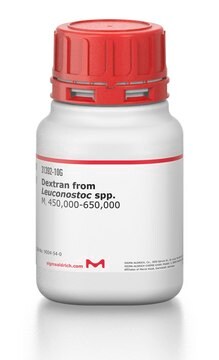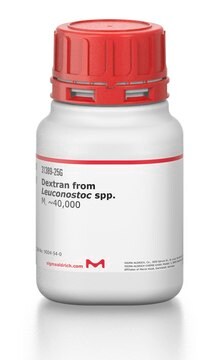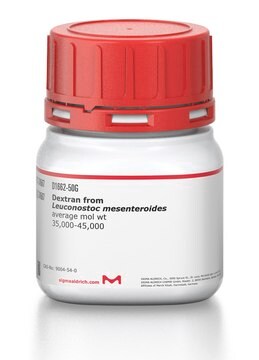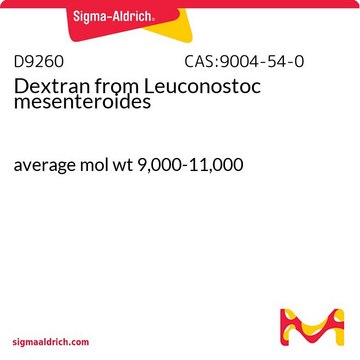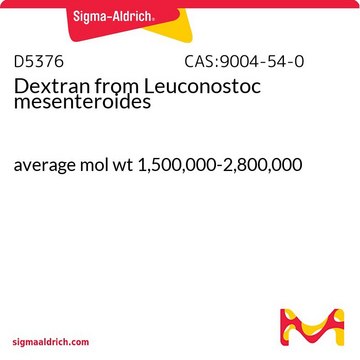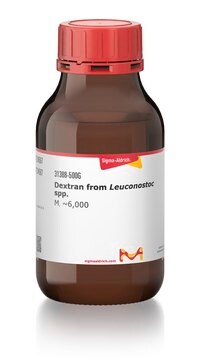D8821
Dextran from Leuconostoc mesenteroides
average mol wt 60,000-76,000
About This Item
Recommended Products
biological source
bacterial (Leuconostoc mesenteroides)
Quality Level
form
powder
optical activity
[α]20/D 190 to 201 °, c = 2% (w/v) in water
mol wt
average mol wt 60,000-76,000
color
white to off-white
mp
483 °C ((901 °F ))
solubility
water: 100 mg/mL at 25 °C, colorless to faintly yellow
storage temp.
2-8°C
InChI
1S/C18H32O16/c19-1-5(21)9(23)10(24)6(22)3-31-17-16(30)14(28)12(26)8(34-17)4-32-18-15(29)13(27)11(25)7(2-20)33-18/h1,5-18,20-30H,2-4H2
InChI key
FZWBNHMXJMCXLU-UHFFFAOYSA-N
Looking for similar products? Visit Product Comparison Guide
General description
Application
- in resuspension of pellets and in Hanks′ balanced salt solution (HBSS) for the isolation of vascular nuclei from frozen post-mortem brain tissue
- to prepare dextran solution in phosphate buffer saline and to maintain corneal hydration and restore corneal thickness to physiological levels of human eyes
- as a polymer solution in the in situ aqueous two-phase systems (ATPS) formation with lysozyme PEGylation reaction
Biochem/physiol Actions
Other Notes
Storage Class Code
11 - Combustible Solids
WGK
WGK 2
Choose from one of the most recent versions:
Already Own This Product?
Find documentation for the products that you have recently purchased in the Document Library.
Customers Also Viewed
Our team of scientists has experience in all areas of research including Life Science, Material Science, Chemical Synthesis, Chromatography, Analytical and many others.
Contact Technical Service
